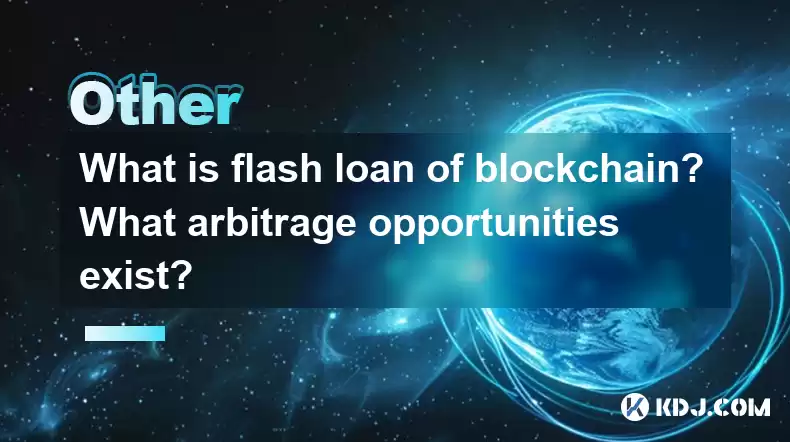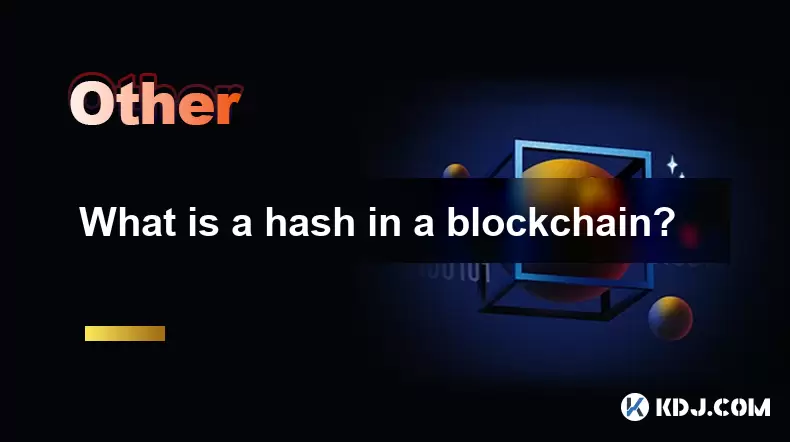-
 Bitcoin
Bitcoin $113900
-1.39% -
 Ethereum
Ethereum $3517
-4.15% -
 XRP
XRP $3.009
1.59% -
 Tether USDt
Tether USDt $0.9997
-0.04% -
 BNB
BNB $766.8
-1.41% -
 Solana
Solana $164.6
-2.38% -
 USDC
USDC $0.9998
-0.02% -
 TRON
TRON $0.3277
0.65% -
 Dogecoin
Dogecoin $0.2023
-1.67% -
 Cardano
Cardano $0.7246
0.05% -
 Hyperliquid
Hyperliquid $38.27
-4.77% -
 Sui
Sui $3.528
-0.52% -
 Stellar
Stellar $0.3890
-0.73% -
 Chainlink
Chainlink $16.16
-2.69% -
 Bitcoin Cash
Bitcoin Cash $539.9
-4.38% -
 Hedera
Hedera $0.2425
-2.00% -
 Avalanche
Avalanche $21.71
-0.97% -
 Toncoin
Toncoin $3.662
5.73% -
 Ethena USDe
Ethena USDe $1.000
-0.02% -
 UNUS SED LEO
UNUS SED LEO $8.964
0.35% -
 Litecoin
Litecoin $107.7
2.33% -
 Shiba Inu
Shiba Inu $0.00001223
-0.40% -
 Polkadot
Polkadot $3.617
-0.97% -
 Uniswap
Uniswap $9.052
-2.49% -
 Monero
Monero $295.1
-3.79% -
 Dai
Dai $0.9999
0.00% -
 Bitget Token
Bitget Token $4.315
-1.85% -
 Pepe
Pepe $0.00001060
0.11% -
 Cronos
Cronos $0.1342
-2.72% -
 Aave
Aave $256.0
-0.87%
What is flash loan of blockchain? What arbitrage opportunities exist?
Flash loans enable arbitrage by allowing users to borrow assets without collateral, repay within one block, and profit from price differences across DeFi platforms.
Apr 27, 2025 at 07:28 pm

Introduction to Flash Loans in Blockchain
Flash loans are a unique feature of decentralized finance (DeFi) that allow users to borrow assets without collateral, provided that the loan is repaid within the same transaction block. This innovative financial tool has opened up numerous arbitrage opportunities within the cryptocurrency ecosystem. In this article, we will explore what flash loans are and delve into the various arbitrage strategies they enable.
Understanding Flash Loans
Flash loans operate on the principle of atomicity, meaning the entire operation must succeed or fail as a single unit. If the loan cannot be repaid within the same transaction, the transaction is reverted, and no assets are exchanged. This mechanism is made possible by smart contracts on blockchain platforms like Ethereum.
The primary platforms offering flash loans include Aave, dYdX, and Uniswap. These platforms enable users to borrow large sums of cryptocurrency, which can be used for various financial strategies, including arbitrage.
How Flash Loans Work
To understand how flash loans work, consider the following steps:
- Initiate the Loan: A user calls a smart contract to borrow funds.
- Execute the Strategy: The borrowed funds are used to execute a financial strategy, such as arbitrage.
- Repay the Loan: The loan must be repaid within the same transaction. If the repayment fails, the entire transaction is reverted.
This process is automated through smart contracts, ensuring that the loan is either fully repaid or not executed at all.
Arbitrage Opportunities with Flash Loans
Arbitrage involves taking advantage of price differences between markets to generate a profit. Flash loans can be used to exploit these differences across various decentralized exchanges (DEXs). Here are some common arbitrage opportunities enabled by flash loans:
Price Arbitrage
Price arbitrage involves buying an asset on one exchange where it is cheaper and selling it on another where it is more expensive. Flash loans enable users to borrow large sums quickly to capitalize on these price discrepancies.
For example, if Token A is trading at $100 on Exchange X and $105 on Exchange Y, a user can borrow Token A using a flash loan from Exchange X, sell it on Exchange Y, and repay the loan with the profit.
Liquidity Pool Arbitrage
Liquidity pool arbitrage takes advantage of the differences in liquidity pools across various DEXs. When a user adds or removes liquidity from a pool, it can temporarily affect the price of the assets within that pool.
A flash loan can be used to borrow assets, manipulate the liquidity in one pool, and then profit from the resulting price change in another pool. This strategy requires careful analysis of the liquidity dynamics across different platforms.
Triangular Arbitrage
Triangular arbitrage involves exploiting price differences between three different assets. For instance, if the price of Token A to Token B, Token B to Token C, and Token C back to Token A forms a profitable loop, a flash loan can be used to execute trades across these pairs.
For example, if 1 A = 2 B, 1 B = 3 C, and 1 C = 0.5 A, a user can borrow Token A, convert it to Token B, then to Token C, and finally back to Token A, making a profit in the process.
Risks and Considerations
While flash loans offer significant opportunities, they also come with risks. The primary risk is the potential for smart contract failures, which can lead to the loss of funds. Additionally, the rapid execution of flash loans can lead to market manipulation and increased volatility.
It is crucial for users to thoroughly test their strategies in a safe environment before executing them on the mainnet. Additionally, understanding the gas costs associated with flash loan transactions is essential, as high gas fees can erode potential profits.
Practical Example of Flash Loan Arbitrage
To illustrate how flash loans can be used for arbitrage, let's consider a practical example:
- Identify the Opportunity: Suppose Token X is trading at $50 on Exchange A and $52 on Exchange B.
- Execute the Flash Loan: A user borrows 1000 Token X from Exchange A using a flash loan.
- Trade on Exchange B: The user sells the 1000 Token X on Exchange B for $52,000.
- Repay the Loan: The user buys back 1000 Token X on Exchange A for $50,000 and repays the flash loan.
- Profit: The user keeps the $2,000 profit from the arbitrage.
This example demonstrates the potential for quick and profitable trades using flash loans, but it also underscores the need for careful planning and execution.
Frequently Asked Questions
Q: Can flash loans be used for purposes other than arbitrage?
A: Yes, flash loans can be used for various DeFi applications, such as collateral swapping, self-liquidation, and governance voting. However, arbitrage remains one of the most popular uses due to the potential for quick profits.
Q: Are flash loans available on all blockchain platforms?
A: No, flash loans are primarily available on Ethereum and other platforms that support smart contracts. Platforms like Aave, dYdX, and Uniswap are the most well-known providers of flash loans.
Q: How can one mitigate the risks associated with flash loans?
A: To mitigate risks, users should thoroughly audit their smart contracts, test their strategies on testnets, and stay updated on the latest security best practices. Additionally, monitoring gas fees and market conditions can help in executing flash loans more safely.
Q: Is it possible to execute multiple flash loans in a single transaction?
A: Yes, it is possible to chain multiple flash loans within a single transaction, allowing for more complex arbitrage strategies. However, this increases the complexity and potential risks associated with the transaction.
Disclaimer:info@kdj.com
The information provided is not trading advice. kdj.com does not assume any responsibility for any investments made based on the information provided in this article. Cryptocurrencies are highly volatile and it is highly recommended that you invest with caution after thorough research!
If you believe that the content used on this website infringes your copyright, please contact us immediately (info@kdj.com) and we will delete it promptly.
- Bitcoin Strategy: Saylor's Not Hoarding, He's Building an Empire
- 2025-08-02 22:30:12
- Bitcoin Bloodbath: Macro Pressures and Liquidations Unleash Crypto Chaos
- 2025-08-02 22:30:12
- Tron, Cold Wallets, and Crypto Trends: What's Hot in the Market?
- 2025-08-02 23:10:12
- Bitcoin's Wild Ride: Davinci, Investors, and the $500K Dream
- 2025-08-02 23:50:12
- Worldcoin, Identity, WLD Price: Decoding the NYC Crypto Buzz
- 2025-08-02 21:10:12
- Shiba Inu: Utility and Community Strength Drive Crypto's Evolution
- 2025-08-02 21:50:12
Related knowledge

What is the difference between on-chain and off-chain transactions?
Aug 02,2025 at 04:22pm
Understanding On-Chain TransactionsOn-chain transactions refer to digital asset transfers that are recorded directly on a blockchain ledger. These tra...

What is the double-spending problem and how does blockchain prevent it?
Aug 02,2025 at 01:07pm
Understanding the Double-Spending ProblemThe double-spending problem is a fundamental challenge in digital currency systems where the same digital tok...

What is the difference between a blockchain and a database?
Aug 01,2025 at 09:36pm
Understanding the Core Structure of a BlockchainA blockchain is a decentralized digital ledger that records data in a series of immutable blocks linke...

How does blockchain handle scalability?
Aug 02,2025 at 02:58pm
Understanding Blockchain Scalability ChallengesBlockchain scalability refers to a network's ability to handle an increasing volume of transactions wit...

What is a hash in a blockchain?
Aug 02,2025 at 05:28am
Understanding the Concept of Hash in BlockchainA hash in the context of blockchain technology refers to a unique digital fingerprint generated by a cr...

What is a hash in a blockchain?
Aug 02,2025 at 04:43am
Understanding the Concept of Hash in BlockchainA hash in the context of blockchain technology refers to a unique digital fingerprint generated by a cr...

What is the difference between on-chain and off-chain transactions?
Aug 02,2025 at 04:22pm
Understanding On-Chain TransactionsOn-chain transactions refer to digital asset transfers that are recorded directly on a blockchain ledger. These tra...

What is the double-spending problem and how does blockchain prevent it?
Aug 02,2025 at 01:07pm
Understanding the Double-Spending ProblemThe double-spending problem is a fundamental challenge in digital currency systems where the same digital tok...

What is the difference between a blockchain and a database?
Aug 01,2025 at 09:36pm
Understanding the Core Structure of a BlockchainA blockchain is a decentralized digital ledger that records data in a series of immutable blocks linke...

How does blockchain handle scalability?
Aug 02,2025 at 02:58pm
Understanding Blockchain Scalability ChallengesBlockchain scalability refers to a network's ability to handle an increasing volume of transactions wit...

What is a hash in a blockchain?
Aug 02,2025 at 05:28am
Understanding the Concept of Hash in BlockchainA hash in the context of blockchain technology refers to a unique digital fingerprint generated by a cr...

What is a hash in a blockchain?
Aug 02,2025 at 04:43am
Understanding the Concept of Hash in BlockchainA hash in the context of blockchain technology refers to a unique digital fingerprint generated by a cr...
See all articles

























































































